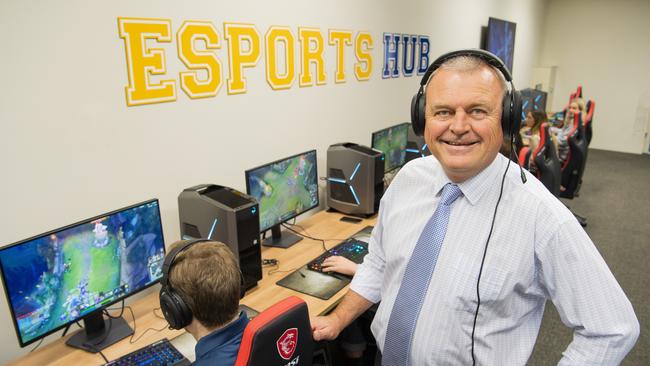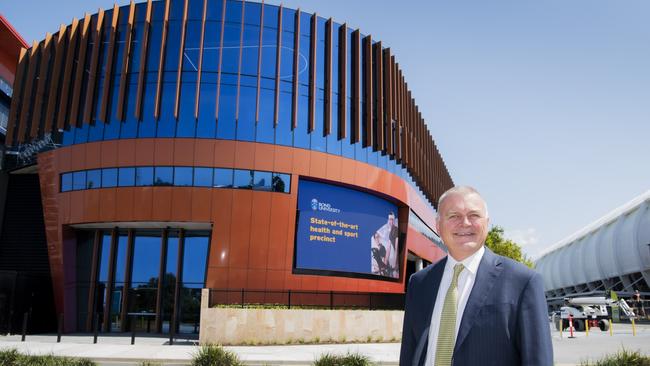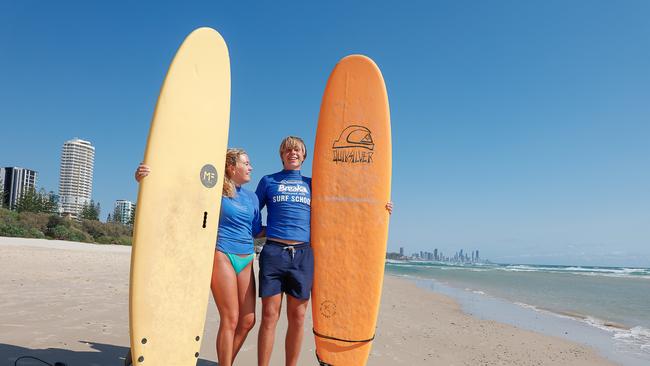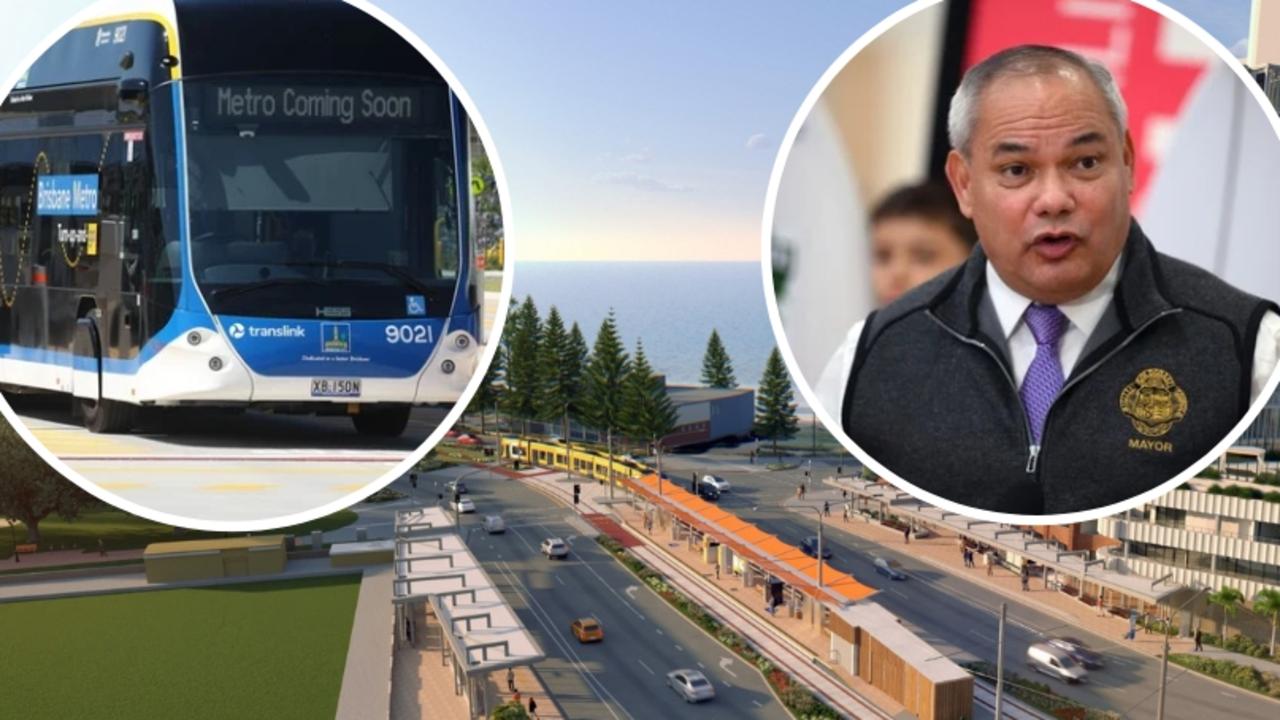Foreign student caps in Australia: Bond University vice-chancellor Tim Brailsford wades in
Bond University Vice Chancellor Tim Brailsford argues Australia needs a more nuanced approach to international students — one with better vetting and aligned to national skill needs.
Gold Coast
Don't miss out on the headlines from Gold Coast. Followed categories will be added to My News.
So what’s all this fuss about international students?
First, let’s take a step back in time to before the Covid pandemic. One of the discussion points of the day was the plan for a ‘Big Australia’. It was generally accepted that our nation needed to grow and expand; and more people, especially younger educated and skilled people would be required to support our ageing population as we are living longer but with a reducing tax base to provide support.
That debate became lost during the rather chaotic time when travel restrictions, border closures, masks and mandatory vaccines dominated our world and clouded our thinking.
Come 2023 and after a start-stop-start rebound in international travel, tourism and immigration were back on the agenda. That year was a bumper year for international arrivals into Australia. Tourists, migrants and international students surged back.
Tourism and accommodation operators were gleeful after several years of struggle. Consumers no longer had to stand in long lines waiting for their morning coffee, nor wait hours for an Uber, and restaurants began reopening as international students and backpackers returned to take on jobs that the average Aussie does not want. And retirees could earn some additional income from renting out their granny flat or spare bedroom.
However, the return of international visitors coincided with a downturn in the economy, rising living costs and high inflation. A rental squeeze developed, and housing shortages brought on by the slowdown, lagged impacts in construction, and the often criticised challenges in planning schemes and red tape across various levels of government.
As 2024 progressed, international visitors were being seen as contributing to these problems and there was a sense that we should tighten our grip on international arrivals with international students put in the spotlight.

Other governments around the world were doing likewise, facing similar challenges. The rise of nationalist policies notably in Europe and North America created a hostile environment for immigration.
Around the middle of last year, the Albanese government targeted international students as a key source of the problem and proposed a cap on the number of international student arrivals.
A lightning rod for the debate has been around housing and the perceived negative impact of international students on rental availability. The debate initially went down this line but the evidence doesn’t stack up well, particularly outside the major cities.
It is complex but essentially international students are not competitive in the rental market as they do not possess sufficient references or financial security that property managers require for a lease. Furthermore, international students tend to take accommodation options such as granny flats, homestays, sharehouses and on-campus dorms which would not be suitable for an Aussie family.
As shown in the graph, over the last 20 years international student arrivals in higher education have trended upward with the exception of the swine flu pandemic in 2009 and the recent Covid pandemic. The surge in enrolments after Covid is clear but it is now on the decline, and data from the start of this year shows the downward trend continuing. Indeed, the number of international student visa holders at the end of 2024 was 15 per cent lower than at the start of 2019.
However, the challenge revealed in the numbers is the departures. Some international students stay in Australia after graduation and successive governments have encouraged this in particular fields and occupations. Hence, the number of departures has historically always been less than arrivals and this difference adds to Australia’s net overseas migration.
In 2023, arrivals were at all-time high reflecting the pent-up demand post-Covid while departures were at an all-time low. While these trends have begun to reverse over the last 12 months, the associated rapid increase in net migration in a relatively short period is no doubt exerting some pressures.

Hence while the headlines are all about the numbers of incoming international students, a more significant longer-term consideration is how we view the benefits of international students staying after their graduation. Deja vu! This is the same debate about Big Australia from six years ago.
Late last year, the government’s proposed cap on international students failed to gain legislative support in the Senate. The government’s mechanism for implementing the caps was not seen as addressing the specific challenges in the major cities of Sydney and Melbourne. Rather the mechanism was criticised for favouring large public universities over smaller regional universities including those on the Gold Coast, and for placing private colleges at a disadvantage.
Last week, the Coalition announced its policy on international students including a reduced overall cap on student arrivals of 30,000 compared to Labor’s position, but more evenly spread across all universities and private colleges.
The Coalition’s mechanism for international student caps is a fairly blunt object which imposes a flat cap across all institutions together with an increase in costs. Australia’s non-refundable student visa application fee of $1600 is already the highest in the world and the Coalition’s policy will push this up to $2500 for regional universities and $5000 for the major metro universities.
Questions remain about the level of institutional caps with the Coalition’s current suggestion that it should be around 25 per cent of overall student enrolments. Whether this is the right number is open for debate. The current percentage of international students across the university sector is around 30 per cent depending on which data set is used. Irrespective, I hope that whichever party wins government on May 3 they will constructively engage broadly about these parameters and policy settings.

Unfortunately this debate is too often pitched as adversarial. While international students are a significant source of income for the higher education sector, universities take very seriously their social responsibility and commitment to educate and upskill Australian citizens of all ages. Nearly all universities are not-for-profit, and hence their business models rely on generating sufficient income to cover costs and provide for investment for future generations.
At most universities, international students pay a significant premium, up to three times the fees that an Australian pays. For instance, if a class of 15 Australian students is supplemented by five international students, the additional income doubles the funds available for that class.
Does the addition of five international students into that class who bring different cultural backgrounds and new perspectives enhance or diminish the experience of the Australian students? Of course, it depends on the motivations and attributes of those additional students.
Perhaps there should be greater emphasis placed on vetting international students to weed out those using their student visa as a backdoor entry from those genuine students wanting to access Australia’s high quality education system.
Perhaps there should be greater emphasis placed on matching international students with the types of courses which improve the nation’s skills deficiencies such as in health, defence, construction and technology.
Perhaps there should be greater emphasis placed on identifying the cohorts of international students who add to our shared understanding of different cultures, whom return to their home nations with an enthusiasm and understanding of Australia and serve as unofficial ambassadors in the long-term.
However, such initiatives are complex and challenging to implement especially in the short-term. Moreover, they are difficult to explain in the midst of an election campaign when there are many other pressing issues.
And perhaps we should have a wider national debate about our overall immigration strategy rather than just pointing the finger at international students.
Australia needs international students. They generate many benefits including economic gains, opportunities and innovations, and cultural advances as others have regularly argued including the Gold Coast City Council and Mayor Tom Tate.
The national priorities identified prior to Covid are still relevant today. Australia has an ageing population and needs educated young people with modern skills to support our future. We need international students to make Australia home beyond their studies, pay their fair share of taxes and help our national economy to grow. Moreover, perhaps recent events overseas have reminded us that it is important for Australia to remain connected to the world around us.
The question is how many, for how long, and how to regulate the flow. Let’s hope we find the right balance.
PROFESSOR TIM BRAILSFORD IS THE VICE CHANCELLOR OF BOND UNIVERSITY ON THE GOLD COAST
More Coverage
Originally published as Foreign student caps in Australia: Bond University vice-chancellor Tim Brailsford wades in




